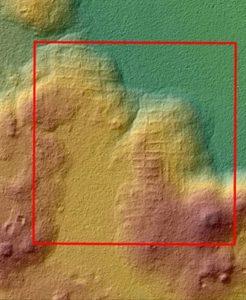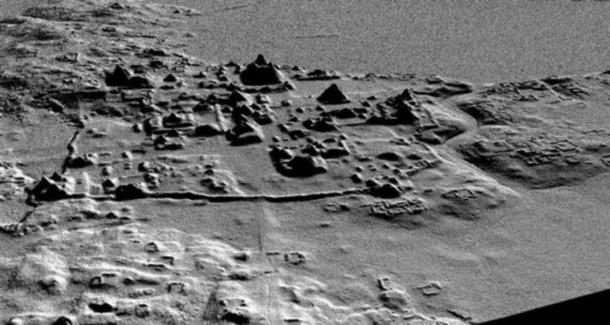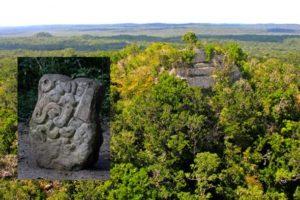Researchers in Guatemala Use LIDAR 3D Scanning in Mirador Basin, Discover Ancient Network of Superhighways

LIDAR scan reveals a network of roads in the Guatemala jungle. [Credit: Archaeological Project Cuenca Mirador]

An illustration showing what El Mirador may have once looked like. [Credit: Latin American Studies]

LIDAR scan reveals a network of roads, canals, corrals, pyramids, and terraces at El Mirador. [Credit: Archaeological Project Cuenca Mirador]

Main: A pyramid covered in vegetation at El Mirador [Dennis Jarvis / flickr]. Inset: A Maya stela found at El Mirador [CC by SA 2.0]
This discovery of an ancient network of roads, and previously unknown pyramids, means that the Mirador Basin Project researchers have even more sites to investigate, and they hope that any future findings can help us understand why the civilization declined. In order to discover more information on this long-ago civilization, Dr. Hansen “urges the governments of Guatemala and Mexico – as far as ‘El Mirador’ extends – to support protecting the area and boosting sustainable tourism.” According to the Mirador Basin Project website, the basin is being considered for protection by the Congress of the Republic of Guatemala, as a wilderness area. Discuss in the LIDAR forum at 3DPB.com.
[Sources/Images: Yucatan Times / Ancient Origins]
Subscribe to Our Email Newsletter
Stay up-to-date on all the latest news from the 3D printing industry and receive information and offers from third party vendors.
Print Services
Upload your 3D Models and get them printed quickly and efficiently.
You May Also Like
3D Printing News Briefs, July 2, 2025: Copper Alloys, Defense Manufacturing, & More
We’re starting off with metals in today’s 3D Printing News Briefs, as Farsoon has unveiled a large-scale AM solution for copper alloys, and Meltio used its wire-laser metal solution to...
Etsy Design Rule Change Reduces Selection of 3D Printed Goods
Online marketplace Etsy has implemented a rule change requiring all 3D printed goods on the site to be original designs. The update to the site’s Creativity Standards states, ¨Items produced using...
Siraya Tech Introduces New Elastomer 3D Printing Materials, Including Foaming TPU
California company Siraya Tech, founded in 2019 with a focus on material science, customer focus, and agility, develops high-quality 3D printing materials that meet the needs of creators, hobbyists, and...
3D Printing News Briefs, April 12, 2025: RAPID Roundup
The news from last week’s RAPID+TCT in Detroit just keeps on coming! That’s why today’s 3D Printing News Briefs is another RAPID Roundup of more exciting announcements from the trade...

































